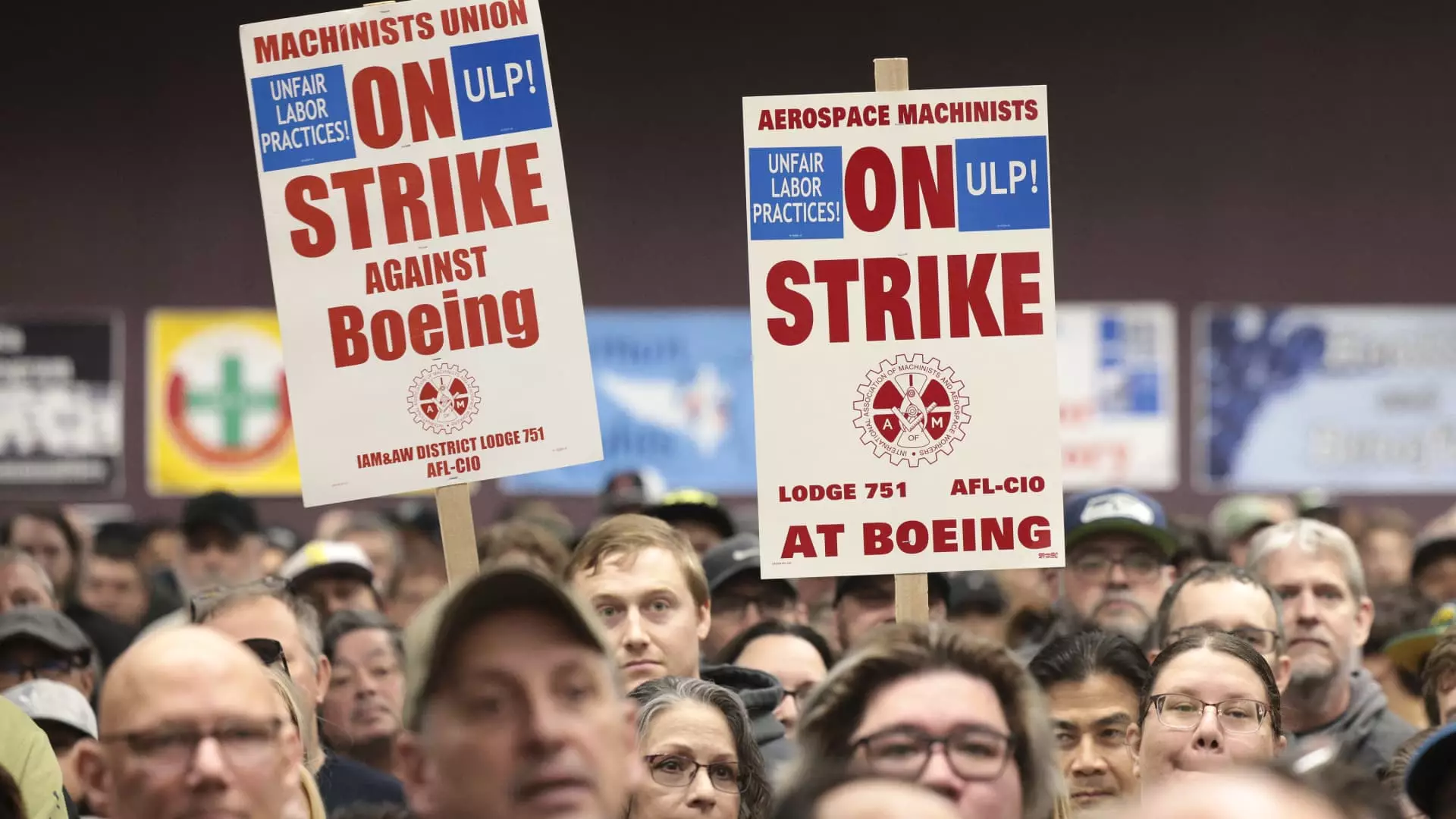In a surprising turn of events, Boeing machinists delivered a resounding rejection of a proposed labor agreement that sought to offer a notable 35% wage increase over a span of four years. This decision, announced by the International Association of Machinists and Aerospace Workers, indicates a deeper unrest brewing among the workforce, which has significant implications for the aerospace giant. With 64% of voters opposing the contract, Boeing’s struggle is far from over, as the strike, which commenced on September 13, has already persisted for more than five weeks, leading to extensive halts across aircraft production primarily concentrated in the Seattle region.
The decision to turn down this contract proposal is a critical setback for Boeing, particularly given the company’s recent financial disclosures. Earlier reports indicated that Boeing is projected to burn through cash until at least 2025 and recently posted a staggering $6 billion quarterly loss—the most significant hit since 2020. Such financial strain highlights the precarious position of the company as it grapples with operational challenges brought on by the ongoing work stoppage, which analysts estimate is costing Boeing about $1 billion each month.
Newly appointed CEO Kelly Ortberg has identified the resolution of the strike as a paramount task in his tenure, emphasizing the need to restore productivity and improve relations with the workforce. While his aspirations to streamline Boeing’s operations to concentrate on core businesses may provide a pathway for recovery, Ortberg’s strategy includes tough decisions, such as a reduction in the company’s global workforce by 10%, affecting approximately 17,000 employees. This decision strikes a balance between fiscal responsibility and the urgent need to revive business operations.
The strike’s emergence highlights a landscape of discontent accompanied by rising costs of living experienced by the machinists. The employees, a workforce of over 32,000 across the Puget Sound region and beyond, initially sought a more aggressive wage increase of 40%, reflecting the pressures they face in meeting everyday expenses. Their grievances are compounded by memories of the significant shifts that occurred in their pension plans, following a previous agreement they accepted in 2014, leading to an already fragile trust in management.
Contract Controversies: A Closer Look
Boeing’s latest offer aimed to bring stability with a financial package including increased 401(k) contributions, additional bonuses of $7,000, and guaranteed construction of new aircraft in the Pacific Northwest. However, the absence of a pension plan in the proposal raised further concerns among union members. The repeated frustrations have left the union leadership, represented by Jon Holden, determined to reopen negotiations for a contract that aligns closer to the workers’ expectations.
Equally critical to the workforce is Boeing’s previous decision to shift production of the 787 Dreamliner to a non-union factory in South Carolina, an action that further strained the relationship with its machinists. The promise to restore aircraft development to its unionized base addresses some of the employees’ ire but fails to mitigate the pressing financial concerns that dominate their current situation.
Compounding the challenges Boeing faces is the broader impact the strike has on the aerospace supply chain. The ongoing walkout brings additional strain to an already fragile post-pandemic supply chain. As Boeing struggles to equip its production lines, suppliers like Spirit AeroSystems are beginning to feel the ripple effects, with recent announcements of temporary furloughs impacting around 700 workers, signifying a potential wave of layoffs if the strike continues.
As a critical player in global aerospace, Boeing’s troubles illuminate the tensions within labor relations and the challenges that accompany a rapidly changing economic landscape. While the company is positioned to address immediate concerns regarding labor relations and production, the road ahead is fraught with uncertainty as it attempts to stabilize its footing in a complex world of manufacturing, safety scrutiny, and financial recovery. The way Boeing handles its labor frustrations may not only define the future of the company but also set a precedent for the wider industry, reflecting the increasing volatility within the workforce and the economic pressures they face.


Leave a Reply